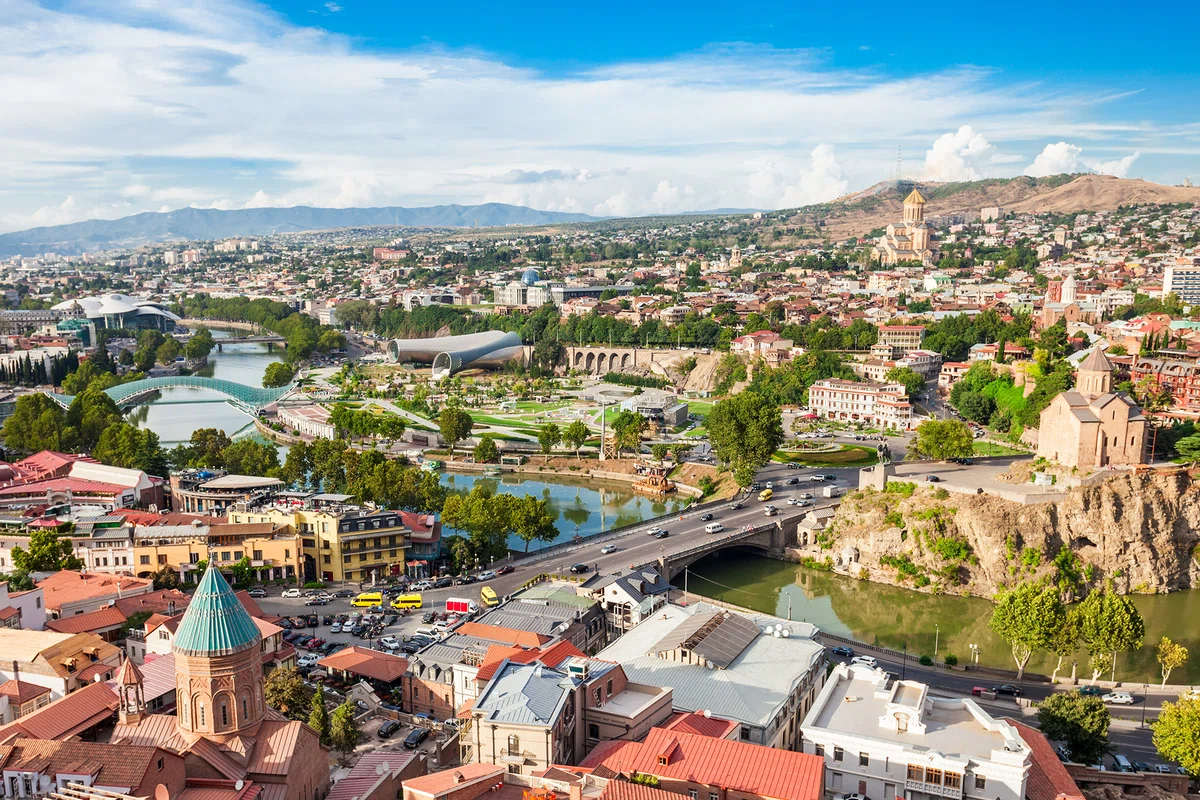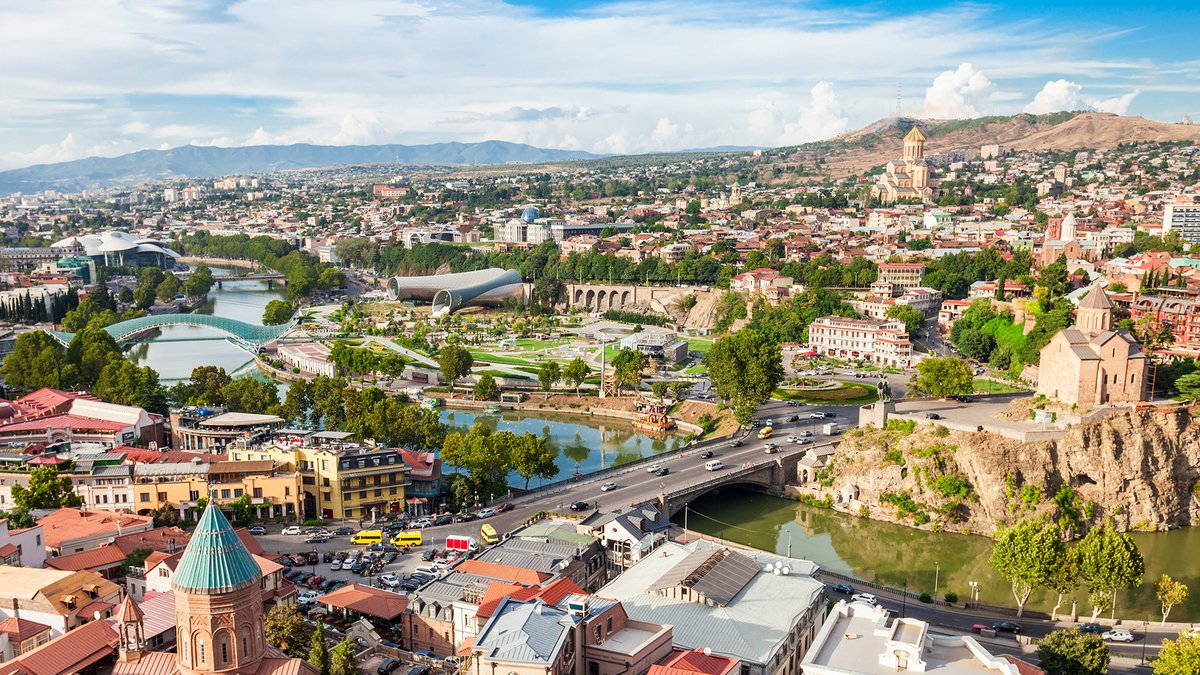
The Metekhi Bridge, one of Georgia's most beautiful sites, is located in Tbilisi's Old District.
The bridge in Metekhi in Tbilisi, connecting the shores of Mtkvari, is one of the most interesting sights of Georgia with a rich history. In ancient times, the Metekhi Bridge was a strategic object, it was destroyed and restored more than once
The Metekhi Bridge in Tbilisi unites the two banks of the Mtkvari River and is located near the Metekhi Church in old Tbilisi. The bridge offers an unforgettable view of the city and the most beautiful places of Georgia: the fortress of Narikala, the Mother of Kartli. At night, from the bridge, you can see an amazing picture of how the old city is reflected in the smooth surface of the river water. The Metekhi Bridge connects Europe Square to Vakhtang Square, where the Vakhtang Monument stands.
The sights of Georgia will be clearly visible from the Metekhi Bridge, these are the Darejan Palace, the Maidan with bright carpets and balconies, the Museum of the History of Tbilisi, Abanotubani. The road from Rike Park leads to the bridge. Rike Park is one of the best places for relaxation and relaxation.
The streets surrounding the bridge will offer you cafes and shops for every taste to have a good time and taste the gastronomic pleasure of Georgian cuisine. The Metekhi Bridge is visited by both locals and tourists for its proximity to historical sites.
History.
The history of the Metekhi Bridge began a long time ago. In the Middle Ages, there was another bridge on the site of the modern bridge, which allowed controlling vast territories and thus defending against enemies, and a cross was made on the ancient bridge supports.
Perhaps the bridge was important for the religious community, and was also an important strategic object. It was destroyed due to enemy attacks, then it was restored and rebuilt many times. It is known from the chronicles that originally it was a single-span wooden bridge.
It was made of wood so that it could be easily disassembled and rebuilt in case of an enemy attack.
The chronicles also describe an interesting story of how the inhabitants of Isani broke (blew up) the bridge so that Bagram IV did not conquer the city of Isani, and did not allow him to enter. In 1797, the bridge was reconstructed, but lived only until 1805g. - the Mtkvari River overflowed and took the bridge with it.
In 1805, the bridge was rebuilt again and it existed until 1826, and then it was changed to a bridge with an arch. And already in 1870, a bridge made of metal was created at this place. The bridge that tourists see now was introduced in 1951 and it is made of reinforced concrete blocks with two spans.
Passage along the embankment is possible only from one bank, which was the reason for the asymmetry of the Metekhi Bridge. The riverbed is blocked by an arch of 43 meters, and there is an overpass on the right bank. The bridge is great for vehicles and pedestrians. The authors of the project were engineer Chomakhidze and architect Demchineli.













33 comments
Log in to leave a comment